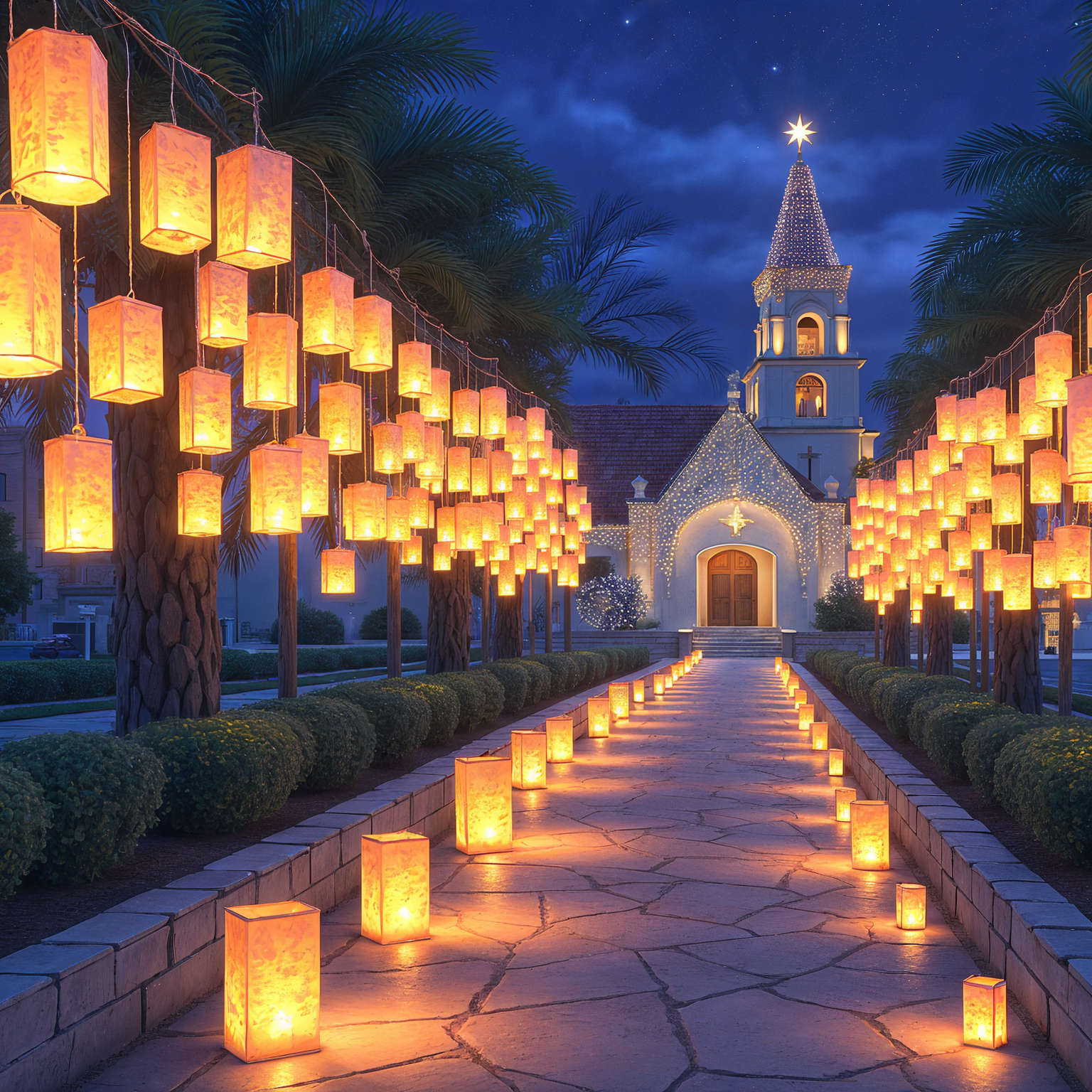Christmas Eve Traditions in Mexico: A Night of Faith, Family, and Festivity
Christmas Eve, or Nochebuena, is one of the most cherished holidays in Mexico. It is a time of faith, community, and cultural celebration, blending Catholic traditions with lively festivities. As families gather across the country, they embrace customs like Las Posadas, attend Misa de Gallo, and share festive meals that highlight Mexico’s regional cuisines. Meanwhile, the evening sparkles with music, laughter, and fireworks, creating memories that last a lifetime.
Las Posadas: A Journey of Faith and Hospitality on Christmas Eve
In the days leading up to Christmas Eve, Las Posadas reenact Mary and Joseph’s search for shelter. Traditionally, participants dressed as Mary, Joseph, angels, and shepherds visit homes while singing carols. On Christmas Eve, however, the final posada is the most elaborate. Once the last door opens, celebrations begin with piñatas, traditional foods, and joyful music. This heartfelt tradition brings communities together, emphasizing themes of compassion and unity.
Misa de Gallo: Christmas Eve Midnight Mass
As midnight approaches, families make their way to church for Misa de Gallo, or Mass of the Rooster. This special service commemorates the birth of Jesus and holds deep spiritual significance. After the service ends, families return home to continue the festivities, often sharing a meal filled with love and gratitude. Moreover, for many, this midnight mass serves as the highlight of the evening, blending reflection with celebration.
Festive Feasts and Regional Delicacies
Christmas Eve in Mexico is synonymous with unforgettable meals that showcase regional specialties:
- Central Mexico: Dishes like bacalao a la vizcaína (salt cod stew), romeritos (mole with shrimp and herbs), and tamales take center stage.
- Oaxaca: Families enjoy tamales wrapped in hoja santa and mole, often paired with hot chocolate made from local cacao.
- Yucatán Peninsula: Holiday tables feature pavo en escabeche (pickled turkey) and cochinita pibil (slow-roasted pork marinated in citrus and spices).
- Veracruz: Seafood dishes like huachinango a la veracruzana (red snapper in tomato sauce) are common.
These diverse dishes not only represent Mexico’s culinary richness but also bring families together around the table in a spirit of love and gratitude.
Ponche Navideño and Sweet Treats
No Nochebuena celebration is complete without ponche navideño, a warm fruit punch made with tejocote, guava, sugarcane, and cinnamon. This beloved beverage, often served in clay mugs, fills homes with a comforting aroma. Families also enjoy desserts like buñuelos, crispy fried dough sprinkled with sugar or drizzled with syrup. Additionally, drinks like atole, a warm corn-based beverage, are perfect for complementing the evening’s rich flavors.
Lighting Up the Night with Fireworks and Farolitos
As the night progresses, fireworks light up the sky across Mexico, especially in Jalisco, Michoacán, and Guanajuato. These dazzling displays add excitement to the festivities and draw families outdoors to watch the spectacle. At the same time, pathways to homes and churches are illuminated by farolitos or luminarias, small lanterns and candles that symbolize Mary and Joseph’s journey. Together, these lights create an enchanting atmosphere that enhances the joy of Nochebuena.
Regional Celebrations and Unique Traditions
Oaxaca: La Noche de Rábanos
On December 23, Oaxaca celebrates La Noche de Rábanos (Night of the Radishes), a festival where artisans carve intricate designs from radishes. The celebrations often extend into Christmas Eve, blending seamlessly with the spirit of Nochebuena.
Veracruz: La Rama
In Veracruz, children carry a decorated branch called La Rama from house to house while singing carols. As they go, neighbors offer treats or coins in return. This charming tradition culminates in lively gatherings full of music and joy.
Chiapas: Indigenous Celebrations
In Chiapas, Indigenous communities incorporate pre-Hispanic elements into Christmas traditions. Ritual dances and ceremonies honor both Christian and traditional deities, creating a unique fusion of cultural and spiritual practices.
Joyful Dances and Piñatas
Traditional dances like the Danza de los Viejitos (Dance of the Little Old Men) add humor and energy to Christmas Eve celebrations. In addition to dancing, children and adults alike enjoy breaking piñatas, which symbolize the triumph of good over evil. Filled with candies, tejocotes, and other fruits, the piñatas bring laughter and excitement to every gathering.
Final Thoughts
Christmas Eve in Mexico is a magical blend of faith, family, and festivity. From the spiritual reflection of Misa de Gallo to the joy of breaking piñatas and sharing meals, Nochebuena captures the heart of Mexican culture. Every region adds its own flavor, ensuring that no two celebrations are exactly alike.
As fireworks light up the night sky and families share moments of togetherness, the true spirit of Christmas shines brightly across the country.
¡Feliz Navidad!!








Additional reading:
Learn more about Mexico’s rich Christmas traditions and how they’re celebrated nationwide.
Discover Lonely Planet’s guide to experiencing Christmas celebrations across Mexico.
Discover Oaxaca’s unique radish carving festival and its connection to Christmas traditions.
Discover Mazatlán’s vibrant culture, golden beaches, and rich traditions during the holiday season.
Explore the stunning beaches of Huatulco and learn how locals celebrate Christmas in this beautiful region.
